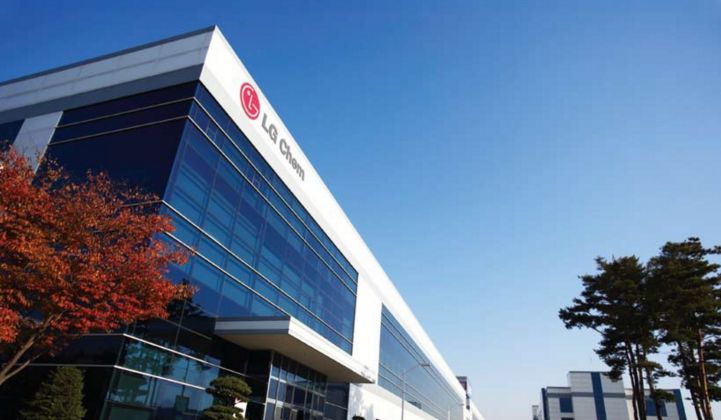An incentive for hybrid solar-storage plants is expected to boost battery demand in South Korea -- but it's unclear whether companies outside South Korea will benefit much from the move.
The Korea Herald recently reported that the South Korean government is planning to introduce incentives for utility-scale solar-plus-storage installations from next year.
“Those who install the energy storage system at their solar power plants will be given additional points on the assessment of their renewable energy certificates,” said the report.
The certificates are currently issued for PV, wind and biomass production.
South Korea’s Second Vice-Minister of Energy, Taehee Woo, said the incentive would boost demand for energy storage systems by KRW 440 billion (USD $391.6 million at the time of the announcement) between now and 2020.
The move follows a similar incentive for wind power introduced last year, and is part of a wider plan to double the level of investment in renewable energy across South Korea.
The plan targets 13 clean technologies and will see the government pumping KRW 40 trillion ($27 billion) into renewable energy over the next five years.
The investment aims to increase the penetration of renewable generation to 7 percent across the South Korean electricity system by 2020, and comes as the country prepares to shutter 10 aging coal-powered plants.
Brett Simon, a storage analyst with GTM Research, said he expected the storage incentive to lead to a significant uplift in installations, based on activity in the U.S. following the extension of the solar Investment Tax Credit (ITC).
“The ITC in the U.S. has influenced the uptake of not only solar PV, but also solar-plus-storage,” he said.
Following the ITC extension in late 2015, Simon said GTM Research was forced to revise its cumulative U.S. installation forecast upward by an extra 500 megawatts due to an increase in storage paired with solar PV across the residential, non-residential and utility-scale segments.
The uptick represented a 33 percent capacity increase between 2016 and 2020, compared to a scenario with no ITC extension.
“South Korea could similarly see a boost in the utility-scale storage market under the new incentive program, with the magnitude of impact dependent upon the level at which the incentive is set and the growth of South Korea's utility-scale solar PV market,” Simon said.
However, the evolution of South Korea’s energy storage market so far suggests most of this growth will benefit local players.
South Korea’s dominant utility, the Korea Electric Power Corporation, is in the process of installing 500 megawatts of utility-scale energy storage projects for frequency response.
Kepco is hoping to have the capacity in place next year, and the build-out program is mostly made up of plants in excess of 10 megawatts in size, including the world’s largest lithium-nickel-manganese-cobalt (NMC) oxide battery system for frequency response.
The 24-megawatt, 9-megawatt-hour project was won by South Korean battery maker Kokam. It also won a 16-megawatt, 6-megawatt-hour NMC battery plant deal in January and a 16-megawatt, 5-megawatt-hour lithium-titanate oxide storage array in August 2015.
In fact, practically all of the Kepco capacity is being filled by South Korean providers. This is hardly surprising given South Korea’s dominance in the battery market.
Last year South Korea had one manufacturer, LG Chem, among the world’s top three electric vehicle battery makers. Another, Samsung SDI, was in the top six. South Korea’s stationary storage market is split fairly evenly between these two companies and Kokam.
Given this dominance, it seems unlikely that foreign battery suppliers will be able to exploit the opportunities posed by the introduction of the solar-plus-storage incentive.
“The solar-plus-storage incentive will inevitably be of greatest benefit to South Korean companies. It is hard to see how foreign players might be able to break into the market," said Hugh Sharman, principal at the international energy consulting firm Incoteco.
Companies dealing in other parts of the power system may have a better chance of success. GE, for example, has been named as a supplier for a program to overhaul South Korea’s remaining coal and combined-cycle plants.



